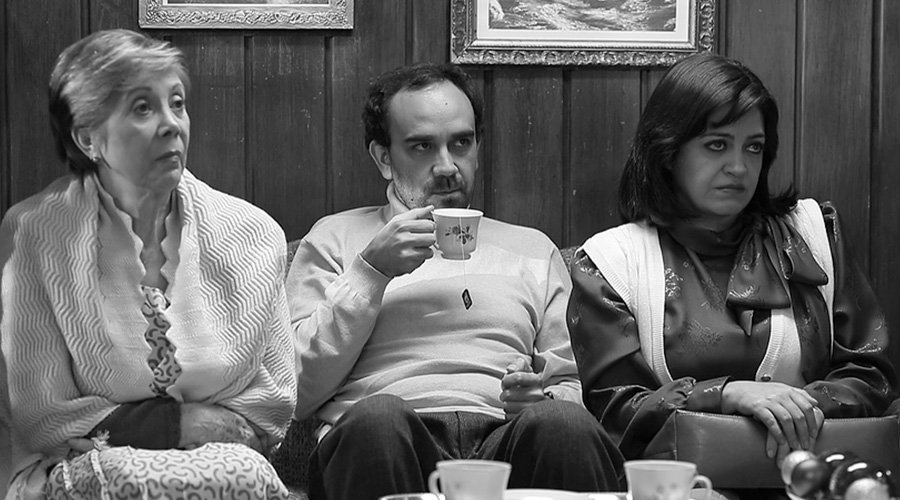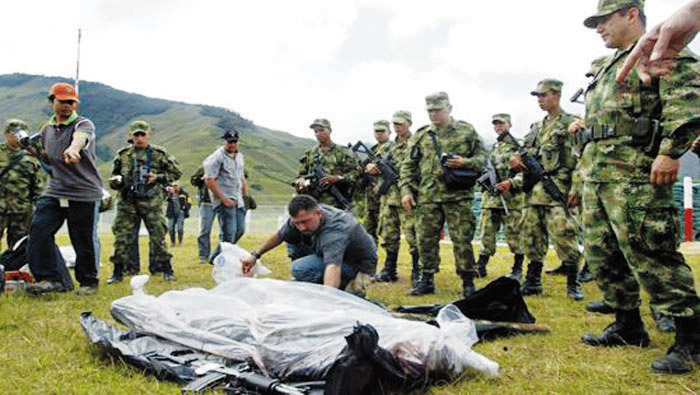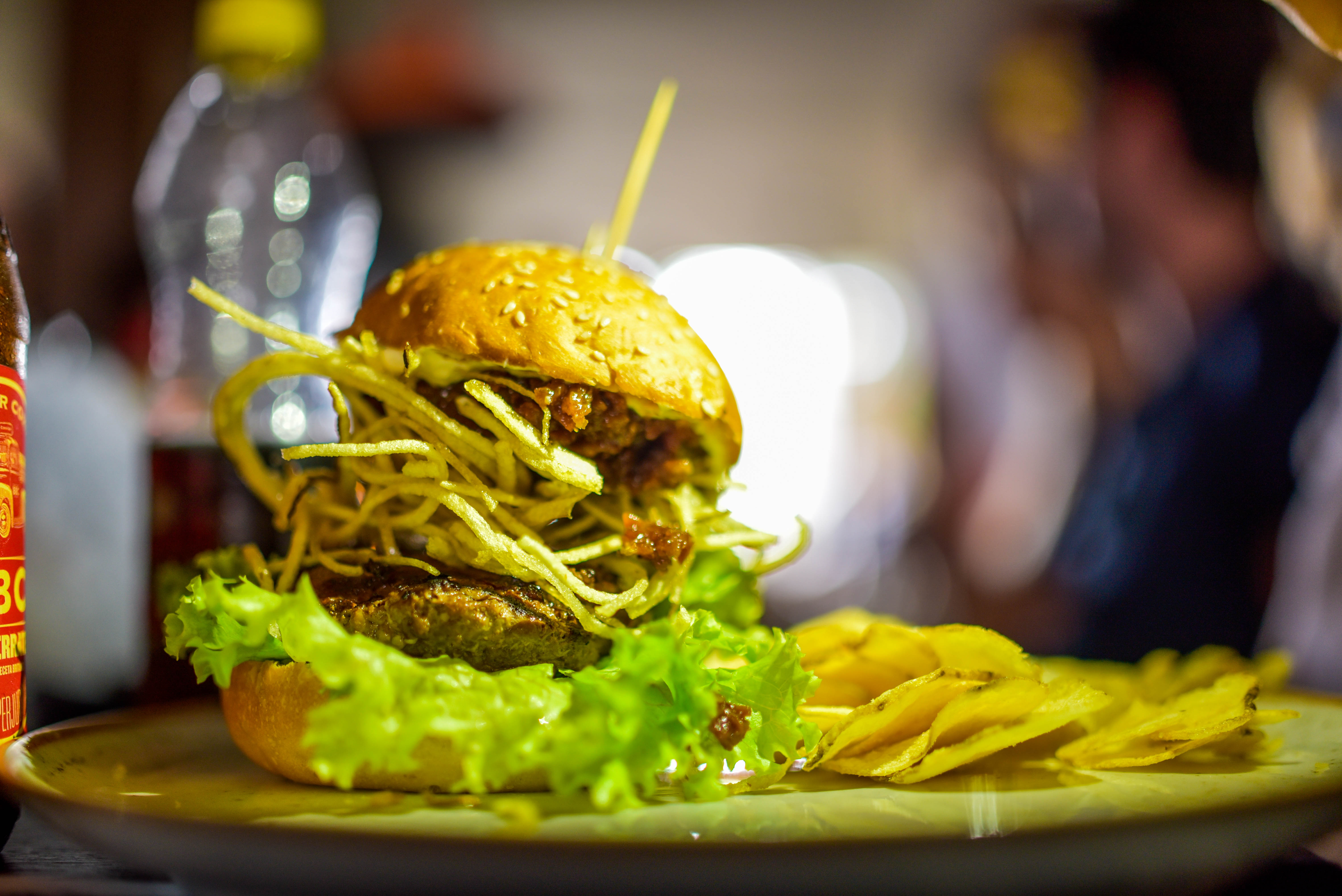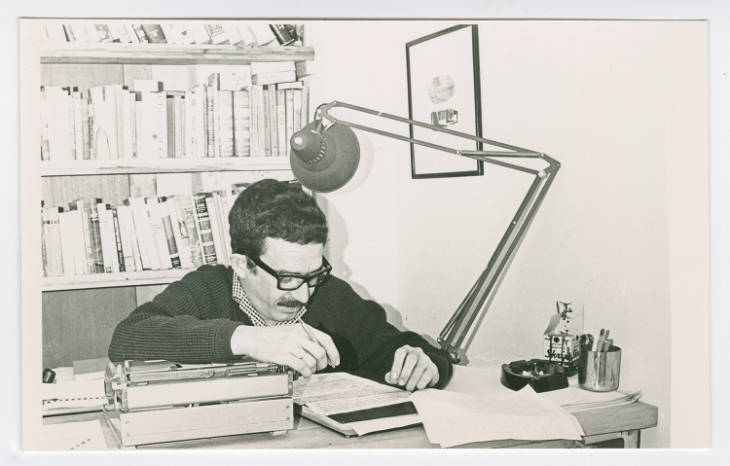
Graffiti artist Ecks and his crew the artists behind El Beso de los Invisibles – are building a name with their huge murals that have been commissioned worldwide.
The very nature of street art means that, often, little is known about the artists behind it. The Bogotá Post had the pleasure of catching up with one of Bogotá’s most acclaimed street artists, Ecks, after he and his crew, Vertigo, returned from painting a six-storey mural in Amman, Jordan.
The mural was commissioned by the Colombian Embassy to Jordan, as part of the Baladk Street Art Festival. It depicts a traditionally dressed Jordanian wheat farmer, working in the Eje Cafetero’s picturesque Valle de Cocora, against a backdrop punctuated with the valley’s iconic wax palms. Ecks says the mural represents two crafts that are important to their respective countries – coffee farming in Colombia and wheat cultivation in Jordan. He argues both are constantly underestimated and the subject of struggle and displacement.
The mural took six days to paint and had to be relocated two days before they started, due to unforeseen problems with the original wall. However, despite these setbacks, it now stands tall in the El Hammam district of the Jordanian capital, receiving no shortage of praise from local residents.
Known to his parents as Sebastián García Cano, Ecks comes from royal bloodlines in the Colombian art world – his great, great grandfather was Francisco Antonio Cano, one of Colombia’s most famous artists. Working under slightly different legal and risk conditions than his ancestor, Ecks started painting seriously as an adolescent about 20 years ago, with the well known Tab29 crew.
The quality coming out of Colombia – from Bogotá, at least – it’s high quality in all terms. It’s a good quality product and creative.
Ecks
It was music that originally drew Ecks’ into the art world. His lone Cypress Hill tape brought him into touch with another boy who was heavily into hip-hop in his first days as a new pupil at the Juan Ramón Jimenez high school in Suba.
The genre was relatively niche at the time, but the pair were able to get their fix from the weekly radio show Reino Clandestino. From there they decided to delve more deeply into the culture and its ‘four elements’ – rhyming, deejaying, graffiti and B-boying.
Graffiti treasures
With Ecks’ family history and love of drawing, it was always clear which of the four elements he’d be most drawn to. He started hitting the streets with his friend and photographing all the graffiti that caught his eye. Inspired by the likes of Lee Quiñones and FAB5FREDDY, whose colourful murals had illuminated the New York Subway more than a decade earlier, Ecks and his friend scoured the city for similar splendours, rarities in Bogotá at the time. “Those were like treasures,” he recounts.
Ecks was living in Chapinero Central at the time and while his mother wasn’t able to prevent her 13-year-old progeny from roaming the streets at night, she was more at ease when he met a slightly older painter who kept an eye on him.

Although Colombia’s security reputation from the 90s is anything but stellar, Ecks believes that the capital’s streets are far more dangerous for graffiti artists now than they ever were back then, mainly to the difference in available drugs and police attitudes. “Times are definitely rougher now,” he says. While 20 years ago a policeman was apparently likely to send him home or tell him to quickly finish up a piece, “They just go violent on you nowadays,” he laments.
But security is not the only thing that has changed. Fast forward a decade and a half to 2013 and rather than evading the law, Ecks and his second (and current) crew Vertigo were being given a grant by the mayor’s office to decorate the city streets.
Related: From Brooklyn to Bogotá, hip-hop artist Yeshua DapoED about Colombia
The result was the now celebrated mural, El Beso de los Invisibles. It depicts a scene from a 2012 photo of a homeless couple by journalist Héctor Fabio Zamora. Hernán and Diana were locked in a passionate kiss in the midst of a riot in the city centre during a visit by President Santos. “So there’s a couple of homeless people that were kissing in the middle of these crazy, crazy riots downtown,” Ecks explains. “It basically speaks about the way the love overcomes the worst situations.”
The mural took seven days and required the use of two cranes – a first for Ecks and his crew. It towers over Calle 26, standing at a daunting 10-storeys and providing an injection of floral colour to the otherwise bleak and grey skyline of the San Diego district of the city centre. Vertigo invited Jade, a Peruvian graffiti artist, to collaborate on the work as part of the grant agreement.
Ecks and his crew have since been commissioned by La Cancillería to paint similarly sized murals in Ottawa, Cartagena and Antwerp.
Ecks the DJ
Graffiti is not the only element of hip-hop culture that Ecks excels at. He often DJs live shows for one of the city’s most exciting and prolific hip-hop artists, N. Hardem. Ecks has a hip-hop promotion company, Viniloyalty which has started pressing its own vinyl records. Viniloyalty has two vinyl releases set for later in the year – 2 Slangs 1 Ghetto by Spanish rappers Natural Spittaz, and the vinyl re-release of N. Hardem’s brilliant 2016 LP Cine Negro.
The burgeoning underground hip-hop scene in Bogotá is a source of huge optimism and pride for Ecks, who is on the hunt for a ‘timeless’ sound. “For me, ‘timeless’ is a thing that you can play right now and you will play it 10 years from now, 20 years from now and it will sound like it just came out,” he says. “So that timeless sound is being created here, in Bogotá and in Colombia in general.”
As for street art, he’s equally proud of the local product: “The quality coming out of Colombia – from Bogotá, at least – it’s high quality in all terms. It’s a good quality product and creative. It has somehow a trademark and uniqueness of it. So I guess that gives something to the city. It enriches the city. It’s like a nutrient for the city. If it’s writing or if it’s muralism… For the landscape it’s a beautiful thing.”





